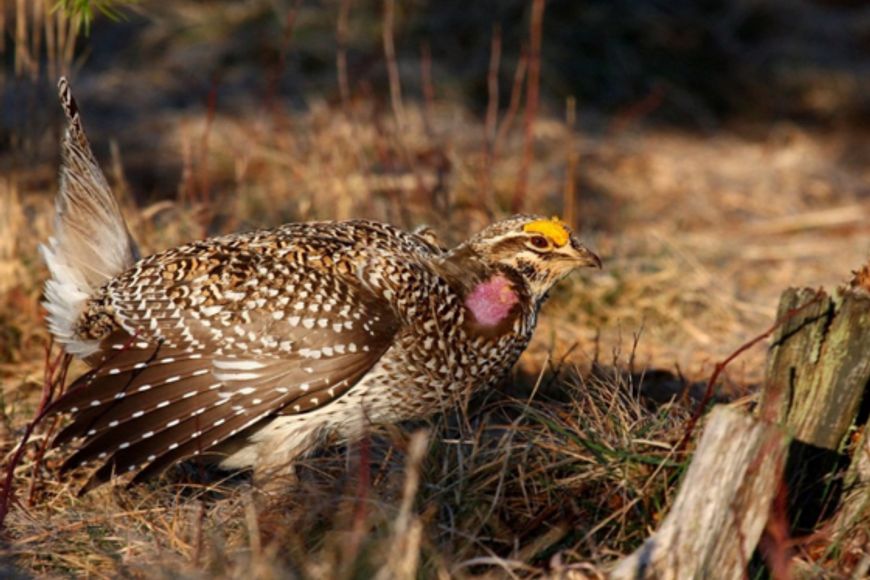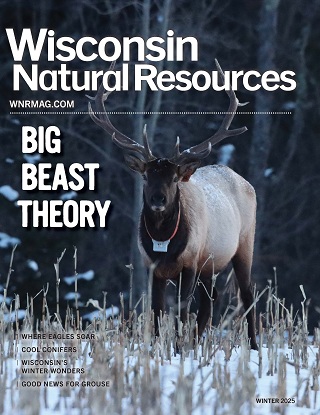Contact: Bob Hanson, DNR Wildlife Biologist
Robert.Hanson@wisconsin.gov or 715-225-8597
DNR Announces Sharp-Tailed Grouse Hunting Season For Fall 2025
 For the first time since 2018, there will be a sharp-tailed grouse hunting season in Wisconsin.
Photo credit: Wisconsin DNR
For the first time since 2018, there will be a sharp-tailed grouse hunting season in Wisconsin.
Photo credit: Wisconsin DNR
MADISON, Wis. – The Wisconsin Department of Natural Resources (DNR) today announced that a sharp-tailed grouse hunt will be held this fall, the first since 2018. The season will run from Oct. 18 to Nov. 9, 2025.
An application period will run from June 30 until Aug. 1 for entry into a limited-drawing lottery. Preference points from prior years will be honored.
Wisconsin has had a long history with sharp-tailed grouse. Beginning in the 1990s, state biologists noticed a steady decline in population numbers. Fragmentation and loss of their core habitat (pine barrens) are believed to be the primary causes of the decline.
In 2019, the Sharp-tailed Grouse Advisory Committee recommended a zero-hunting quota, and the DNR did not hold a hunting season that year. Every year since, the DNR again reviewed the available data and the committee’s recommendation to decide whether to hold a hunting season that year.
The advisory committee, consisting of DNR biologists, federal agency staff and interested conservation groups, specifically wanted to see a higher population before recommending a hunt. The DNR and partners spent the next several years increasing habitat restoration work on both public and private land. Restoring and reconnecting the fragmented habitat that sharp-tailed grouse depend on should lead to an increase in the population.
Thanks to these restoration efforts and the efforts of conservation partners focused in northwest Wisconsin, the sharp-tailed grouse population has been growing. This year, the Sharp-tailed Grouse Advisory Committee felt the population had recovered enough to support a limited harvest.
Bob Hanson, DNR wildlife biologist, has been working with the sharp-tailed grouse population for years and has been a key member of the advisory committee.
“The Sharp-tailed Grouse Advisory Committee used several criteria to evaluate whether the population could support a hunt. We looked at lek survey numbers, winter survivability, nesting and brood rearing success, weather forecasts and habitat metrics,” said Hanson. “Based on the population response we’ve been seeing, the metrics considered were all satisfied and suggested the population was large enough again for a limited hunt.”
The reopening of the season is a win for conservation. It culminates years of intensive habitat work in the Northwest Sands region.
“I hope to see the population numbers continue to climb,” said Hanson. “As we continue creating new barrens habitat and connecting habitat segments within a fragmented landscape, we should continue to see the population increase.”
Check out the DNR’s Sharp-tailed Grouse Hunting webpage for more information on sharp-tailed grouse hunting. For information on sharp-tailed grouse management efforts and where to watch for public involvement opportunities, visit the DNR’s Sharp-tailed Grouse Management webpage.

